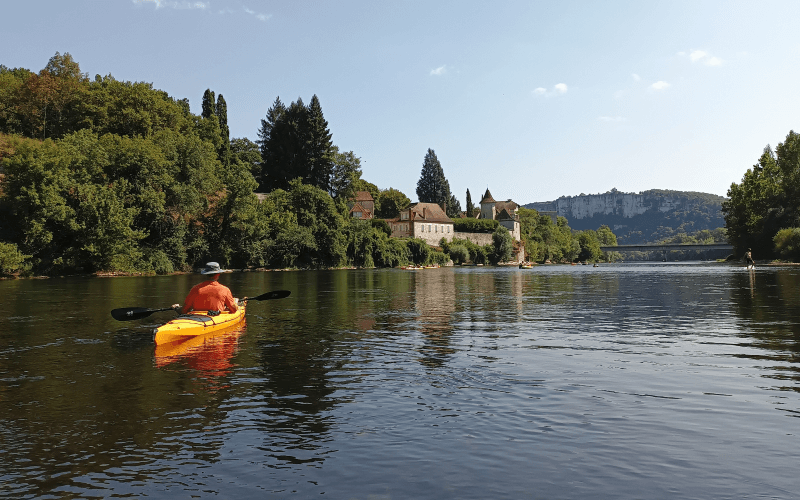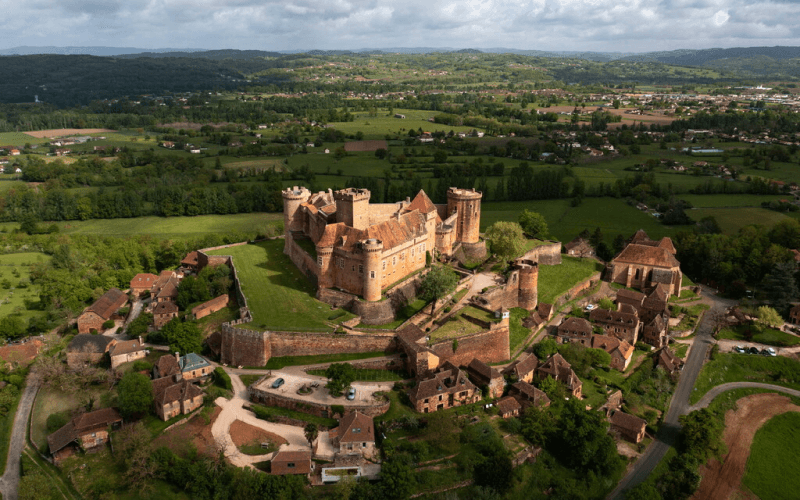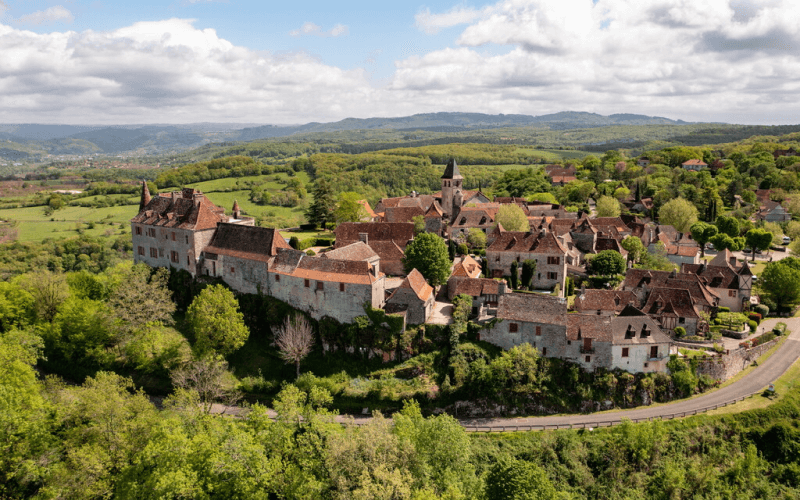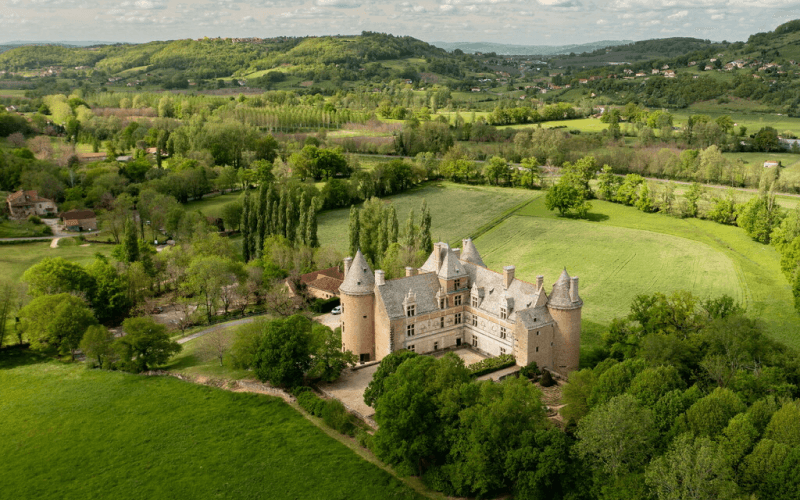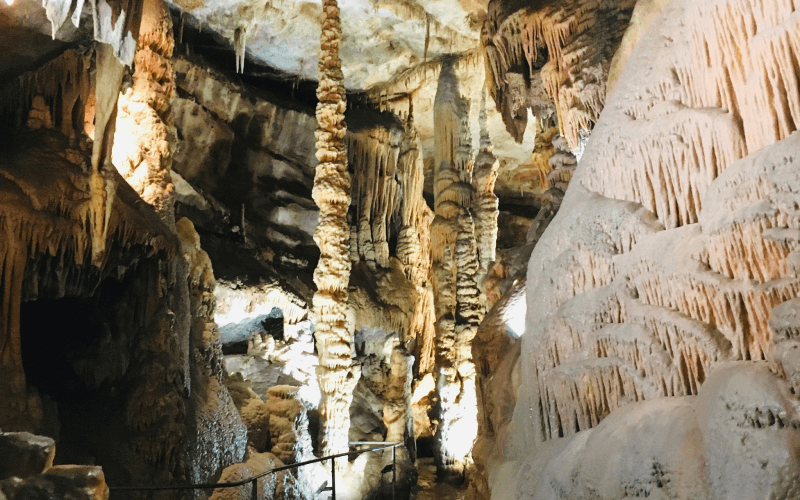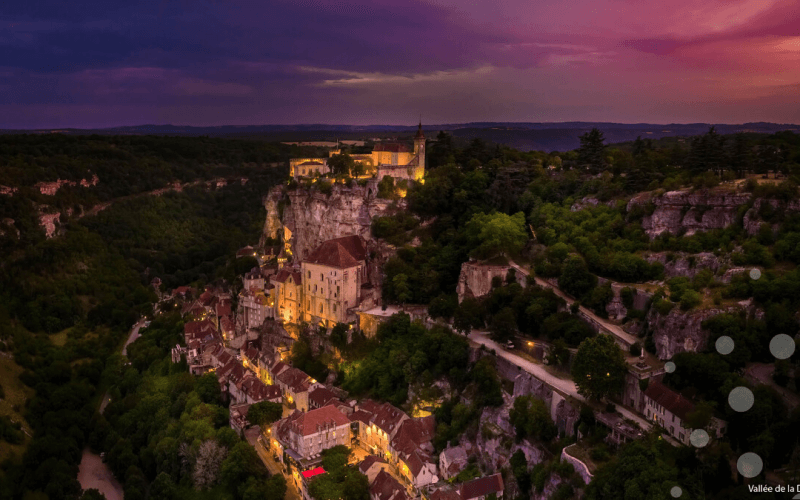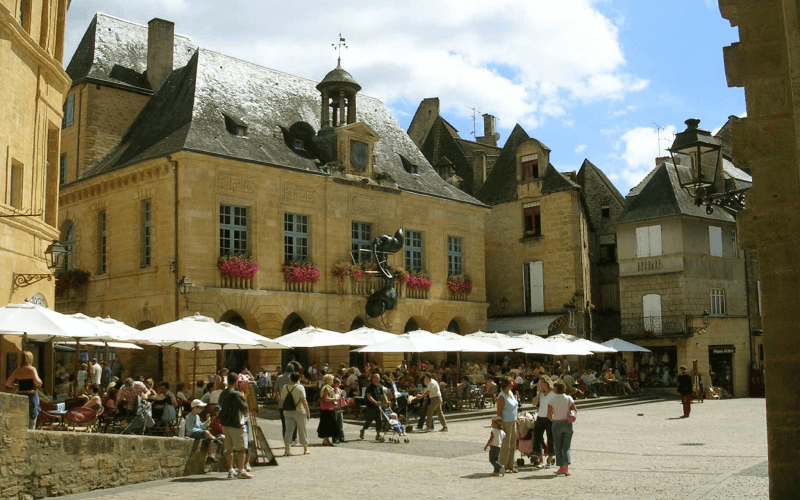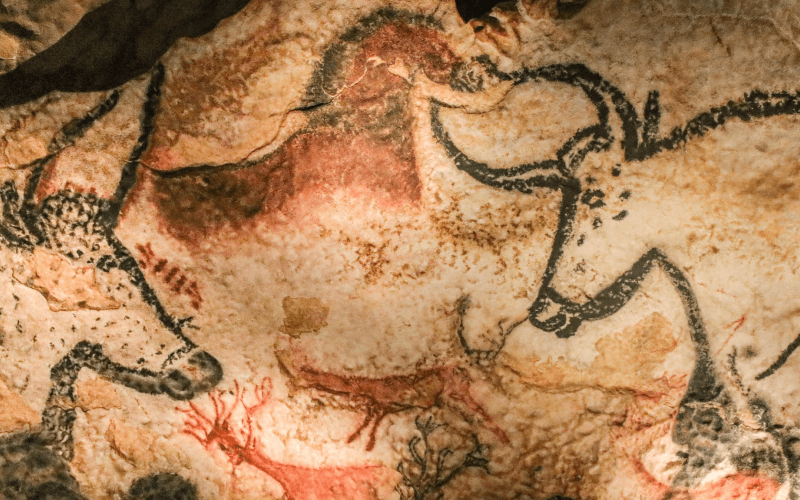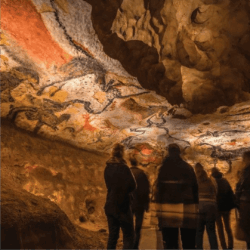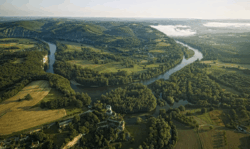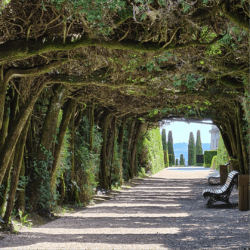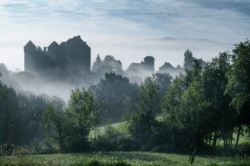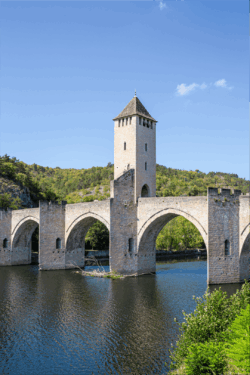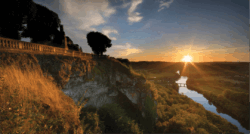
The region around Château Plagne – In the heart of the Dordogne Valley
The Dordogne Valley has been a UNESCO biosphere reserve since 2012.
A landscape suspended in time
Château Plagne rises up between lush green forests, golden limestone cliffs and gently curving riverbeds – a place that exudes the magic of a landscape that seems to have fallen out of time.
The upper Dordogne valley is considered one of the most beautiful parts of France: fairytale villages nestle on the banks and medieval castles proudly watch from above. The hero is the tranquillity of a landscape that has retained its unspoilt nature.
History in every stone
Discover where Gauls, Romans and knights once left their mark, with every stone telling a story.
The Dordogne was a border river during the Hundred Years’ War, a lifeline for traders, home to poets and photographers – and is now a mythical place of longing for anyone in search of authenticity.
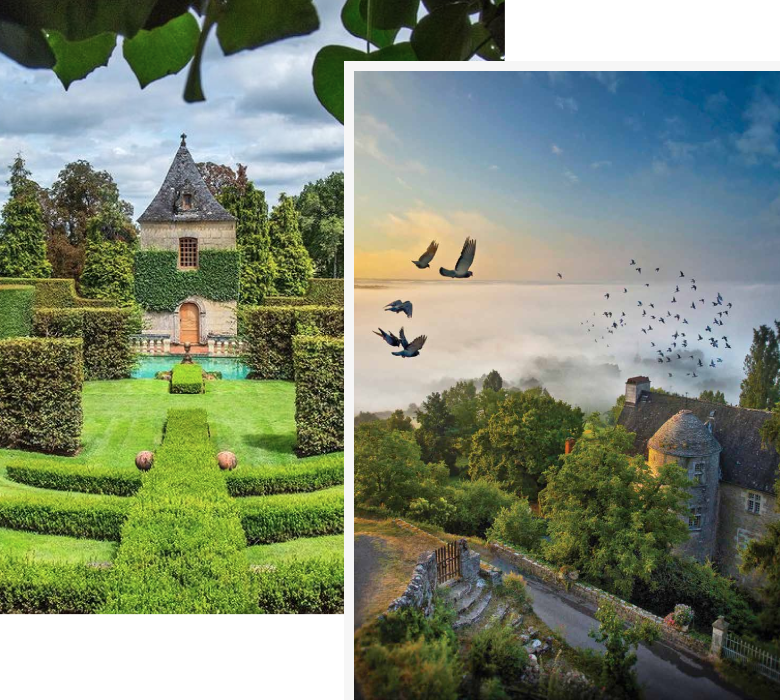
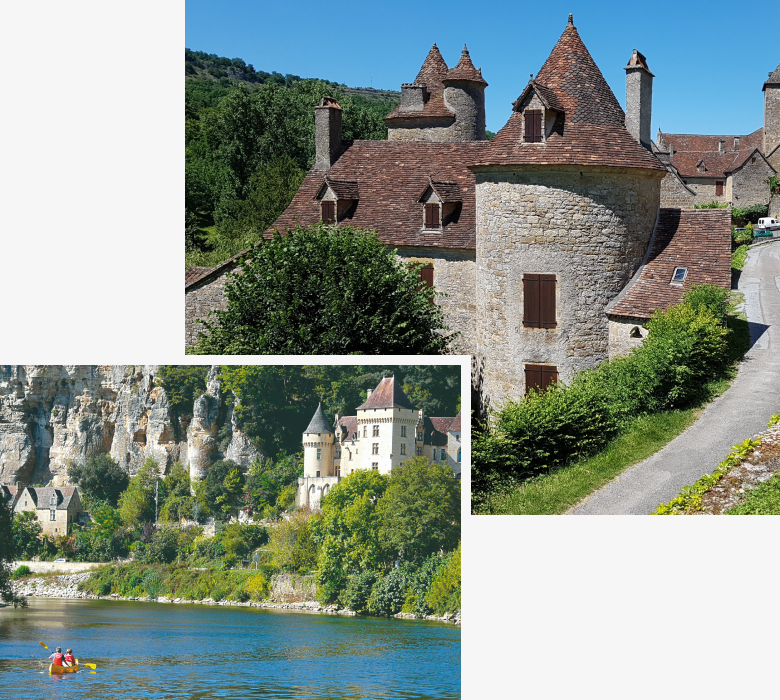
Villages, castles and markets
The journey takes you past the most beautiful villages in France: from the ruby-red walls of Collonges-la-Rouges to the vertiginous cliffs of Rocamadour, from quiet monasteries to lively markets.
Whether paddling in the river, strolling through historic alleyways or looking down from a castle battlement – the Dordogne Valley enchants with every moment.
Château Plagne – gateway to a world of magic
Château Plagne is not just a place, but a gateway to this world. A place to dream, marvel and pause for a moment.
Once a vineyard, it still bears the traces of its history and at the same time opens up views of the vast landscape – a retreat that combines enjoyment, tranquillity and inspiration.
On the river through history
The Dordogne is more than just a river – it is a lifeline that has connected people and carried stories for centuries. The best way to get to know it is to surrender to it: in the gentle rocking of a canoe or gliding quietly in a kayak. With every paddle stroke, the valley opens up and the landscape begins to tell its story.
The journey of the wooden gabarres once began in the east, in Argentat. Loaded with oak trunks from the surrounding forests, they floated downstream to the wine barrels of Bergerac and Bordeaux. Today, Argentat is a quiet gateway to the upper Dordogne valley – a town whose historic facades still bear witness to the time when the river was the most important trade route.
A little further downstream lies Beaulieu-sur-Dordogne, a town that lives up to its name: “the beautiful bank”. The town smells of strawberries in May, small hotels and restaurants beckon and the Romanesque abbey church of Saint-Pierre rises up in the middle of the town – a stone poem that has told of faith and constancy for over a thousand years.
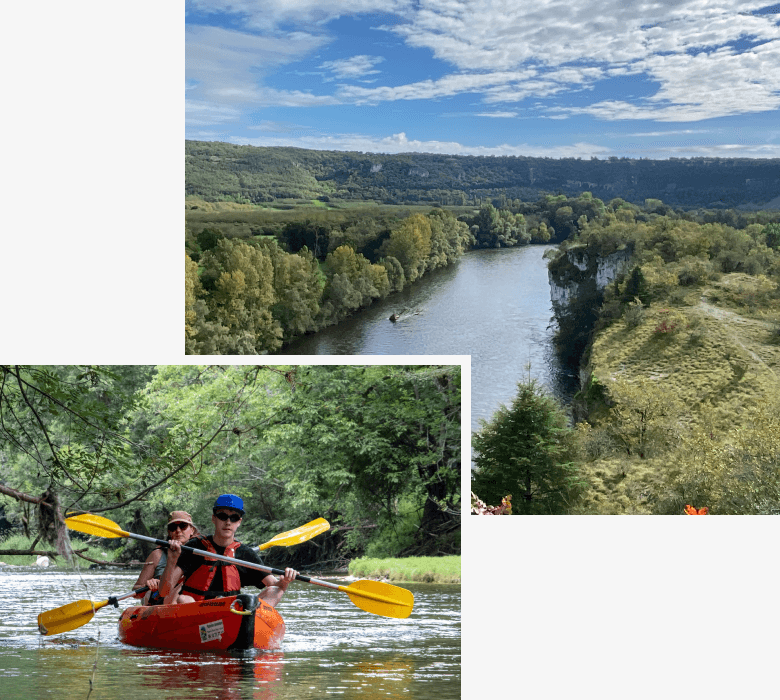
Highlights of the region
🌿 Collonges-la-Rouge
The “red village” with its ruby-colored sandstone walls.
⛪ Rocamadour
A spectacular place of pilgrimage built into the rocks.
🏰 Castles & palaces
Medieval fortresses overlooking the valley.
🥖 Weekly markets
Fragrant specialties, cheese, wine and fresh baguettes.
🚣 Nature experiences
Paddling on the Dordogne, hiking through gorges, cycling along the riverbanks.
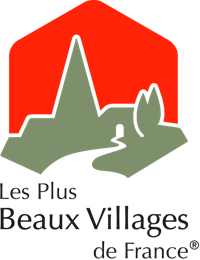
Here you can see selected excursion highlights in our region. The distance to Château Plagne is indicated in kilometers. Click on the image to go to the homepage of the selected location.
Did you know? Most of the villages awarded the title of “Les Plus Beaux Villages de France” are located in the south of France and many of them are not far from Château Plagne:
Here you can see selected excursion highlights in our region. The distance to Château Plagne is indicated in kilometers. Click on the image to go to the homepage of the selected location.
Read here what Henry Miller (American writer and painter, 1891-1980) wrote about the Dordogne Valley in his travelogue “The Colossus of Maroussi“:
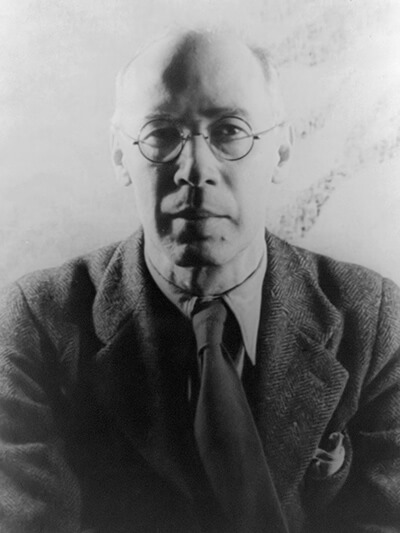
A few months before the war broke out, I decided to take a long vacation. I had always wanted to get to know the Dordogne valley. So I packed my suitcase and took the train to Rocamadour, where I arrived early one morning at sunrise, the moon still shining in the sky. It was a brilliant idea of mine to travel to this area before plunging into the glittering white world of Greece. Even a glimpse of the black, mysterious river at Dômme from the beautiful steep hill on the edge of town is something to be thankful for for a lifetime.
For me, this river, this land belongs to the poet Rainer Maria Rilke. It is not French, not Austrian, not even European, it is the enchanted land that was discovered by poets and to which only they may lay claim.
On this side of Greece, nothing comes close to paradise. Let’s generously call it the paradise of the French. It must have been a paradise thousands of years ago, probably already in the time of Cro-Magnon man, despite the large caves in which fossils point to a rather wild and frightening life. I believe that Cro-Magnon man settled here because he was extremely intelligent and had a highly developed sense of beauty. I believe that his religious feeling was also very developed and that it flourished here, although he lived like an animal in the deep caves.
I believe that this peaceful, vast region of France will always remain a sacred place for man, and when the cities have killed the poets, it will be the refuge and cradle of future poets. I repeat that this visit to the Dordogne was extremely important to me; this land gives me hope for the future of humanity, for the future of the whole world.
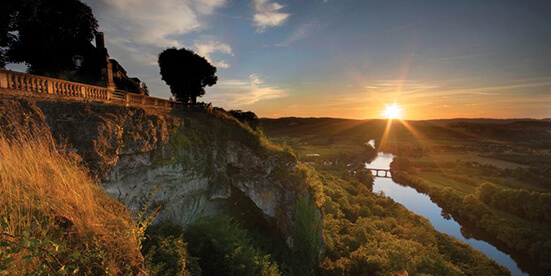
The day may come when France perishes, but the Dordogne will live on like all the dreams that nourish the souls of men. The fascination of this region is easy to explain, because in addition to the proverbial delights of regional cuisine, you can also enjoy a lovely and varied landscape here.Château Plagne is located in the French province of Quercy, which directly adjoins the Périgord and today essentially extends to the “Lot” department with the capital Cahors. The landscape is dominated by the Dordogne, one of the longest rivers in France at 490 km in length. The Dordogne is one of the natural rivers with a picturesque river valley and no artificial regulation, making it one of the most popular waterways in France. It has a mixed Atlantic-Mediterranean climate – the ideal conditions for a wide variety of vegetation.



